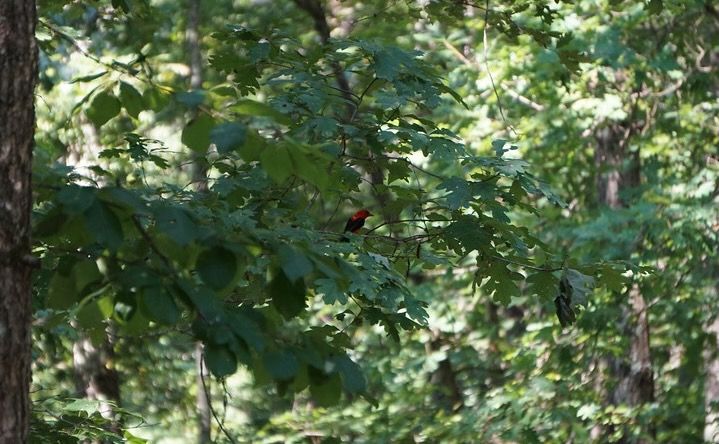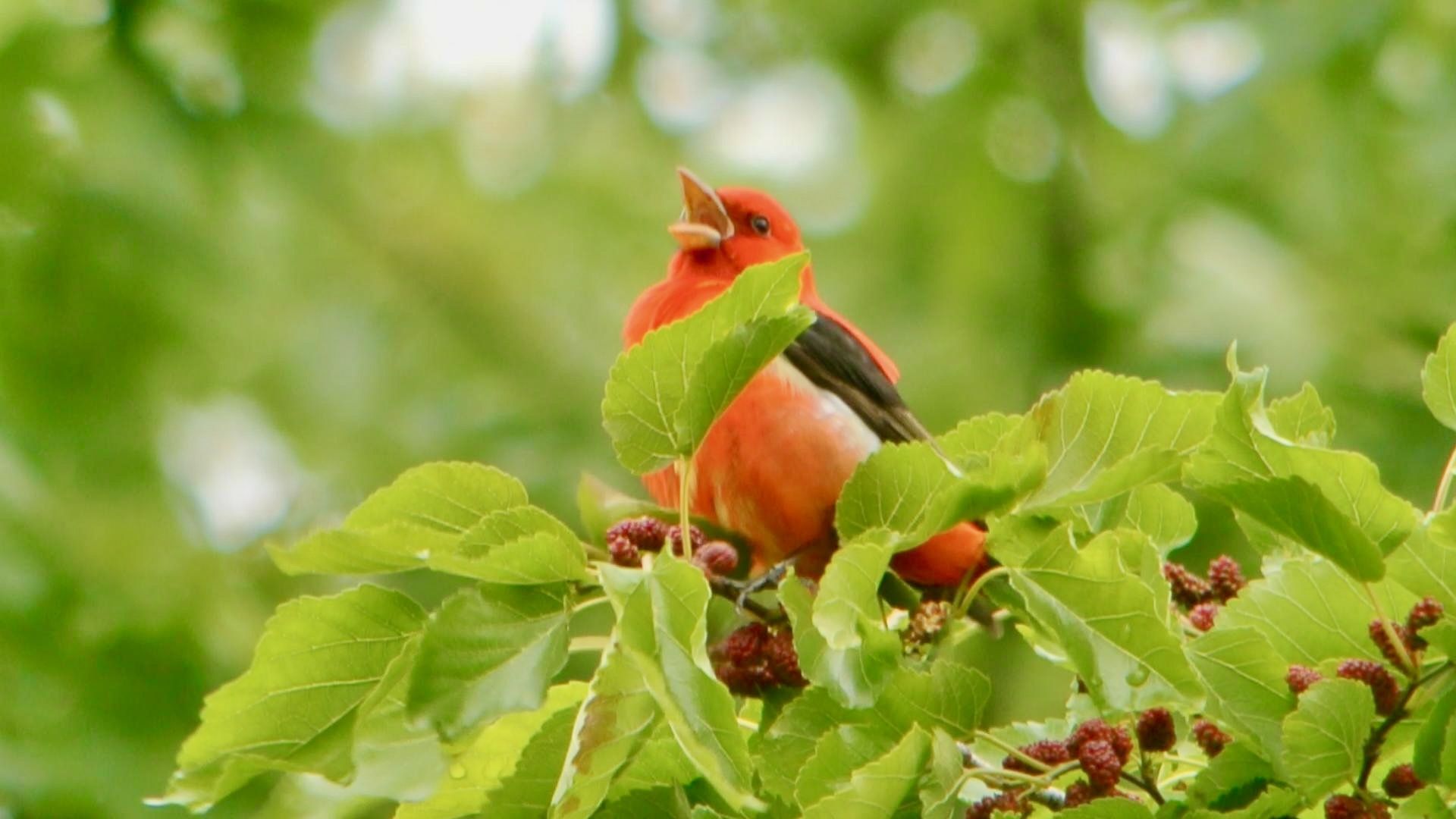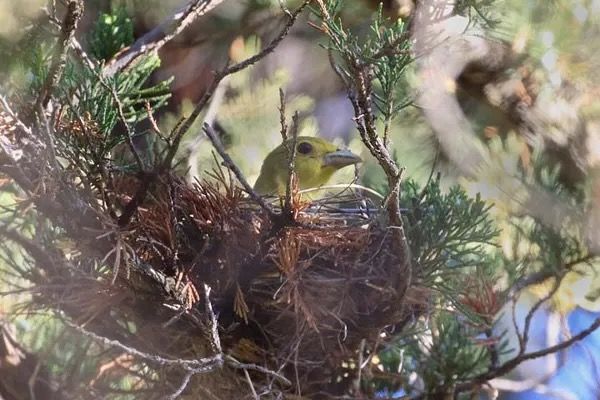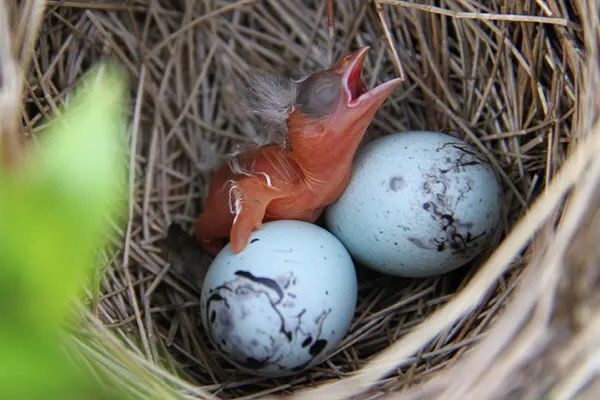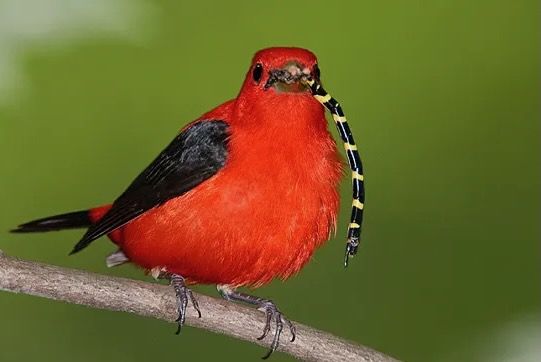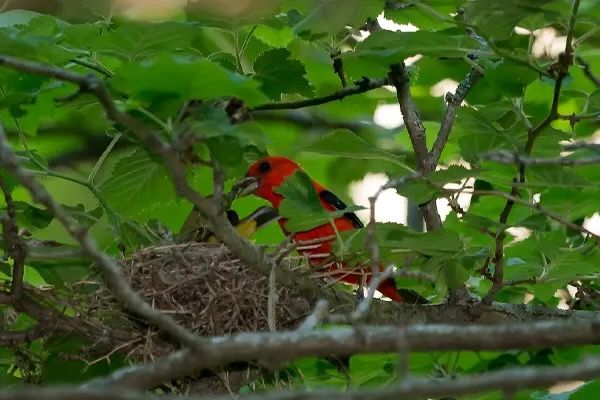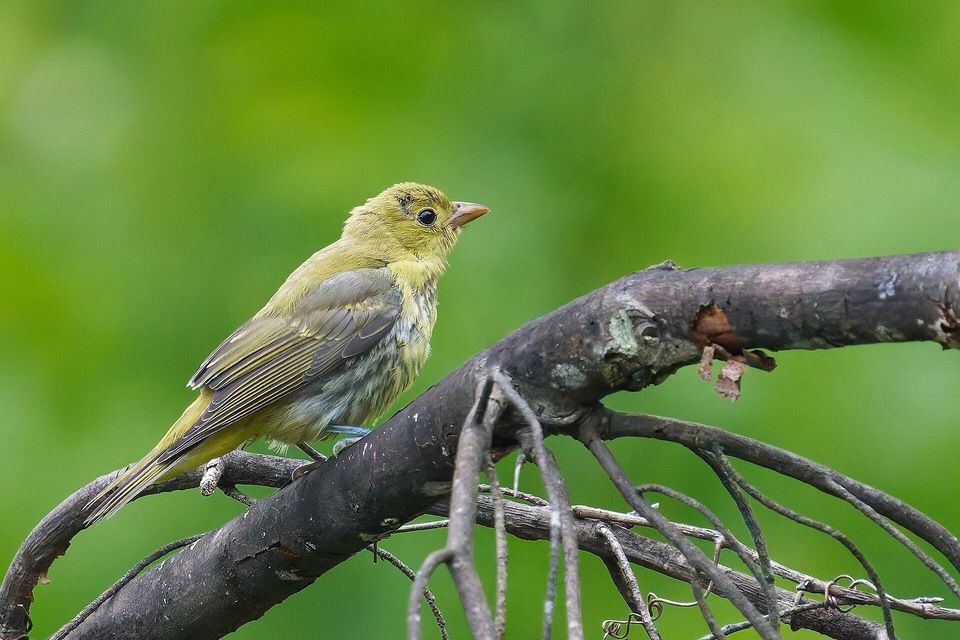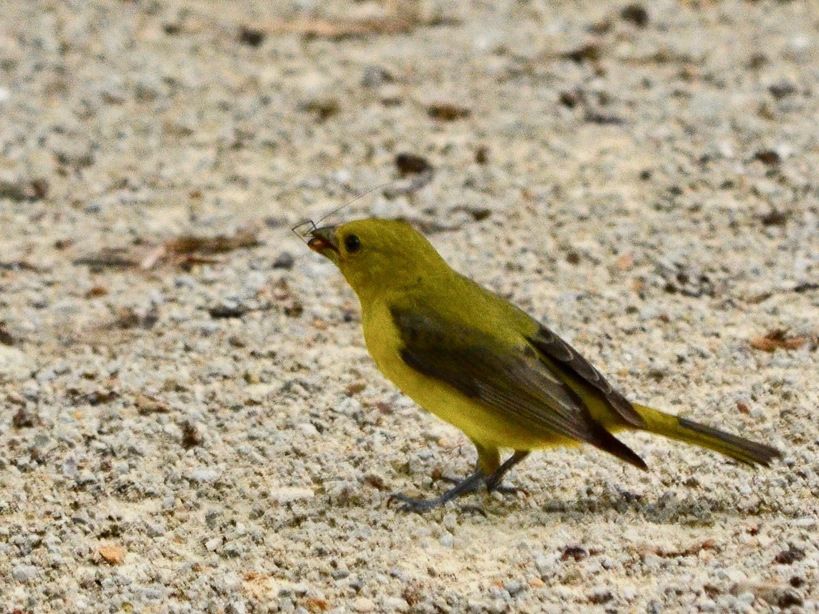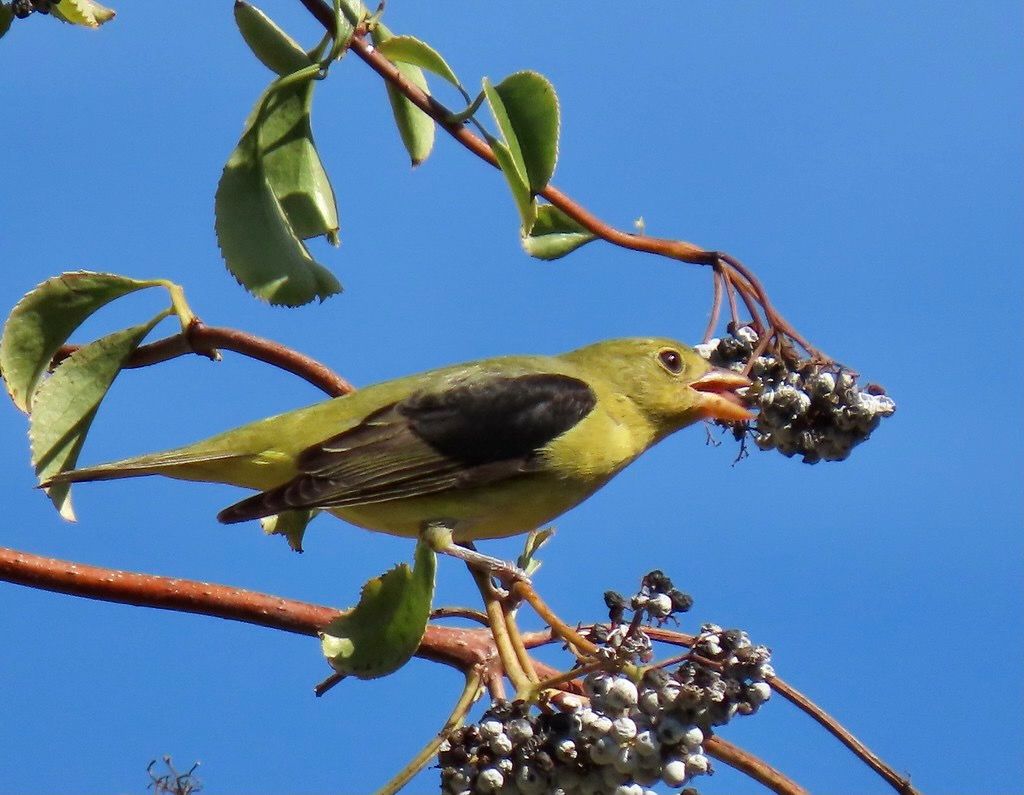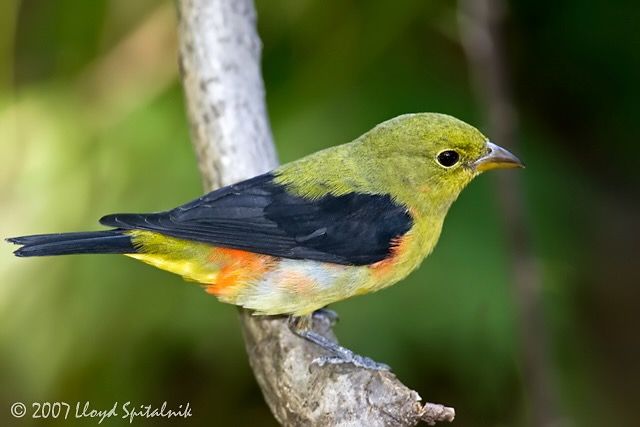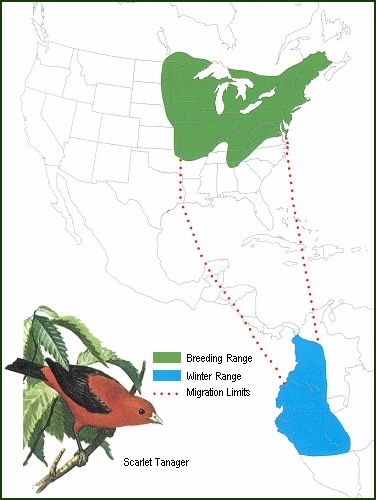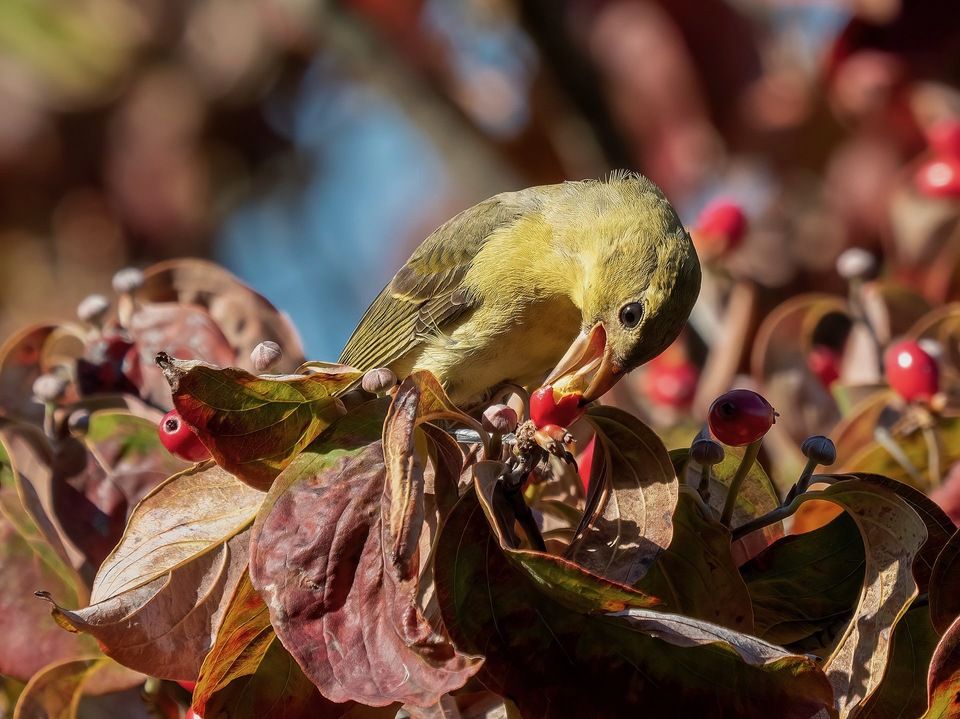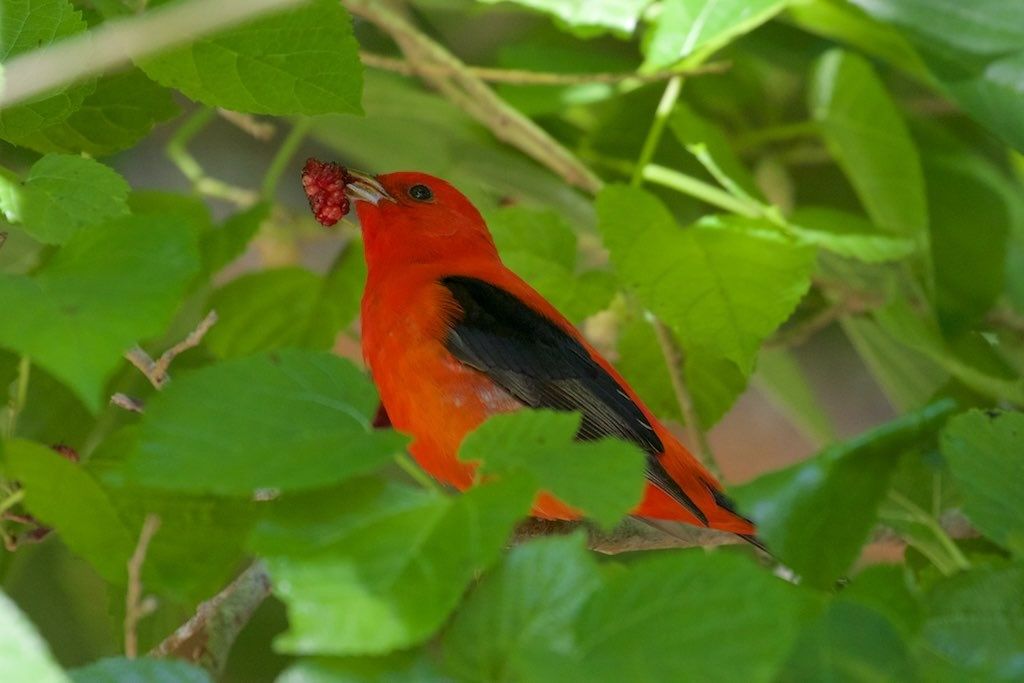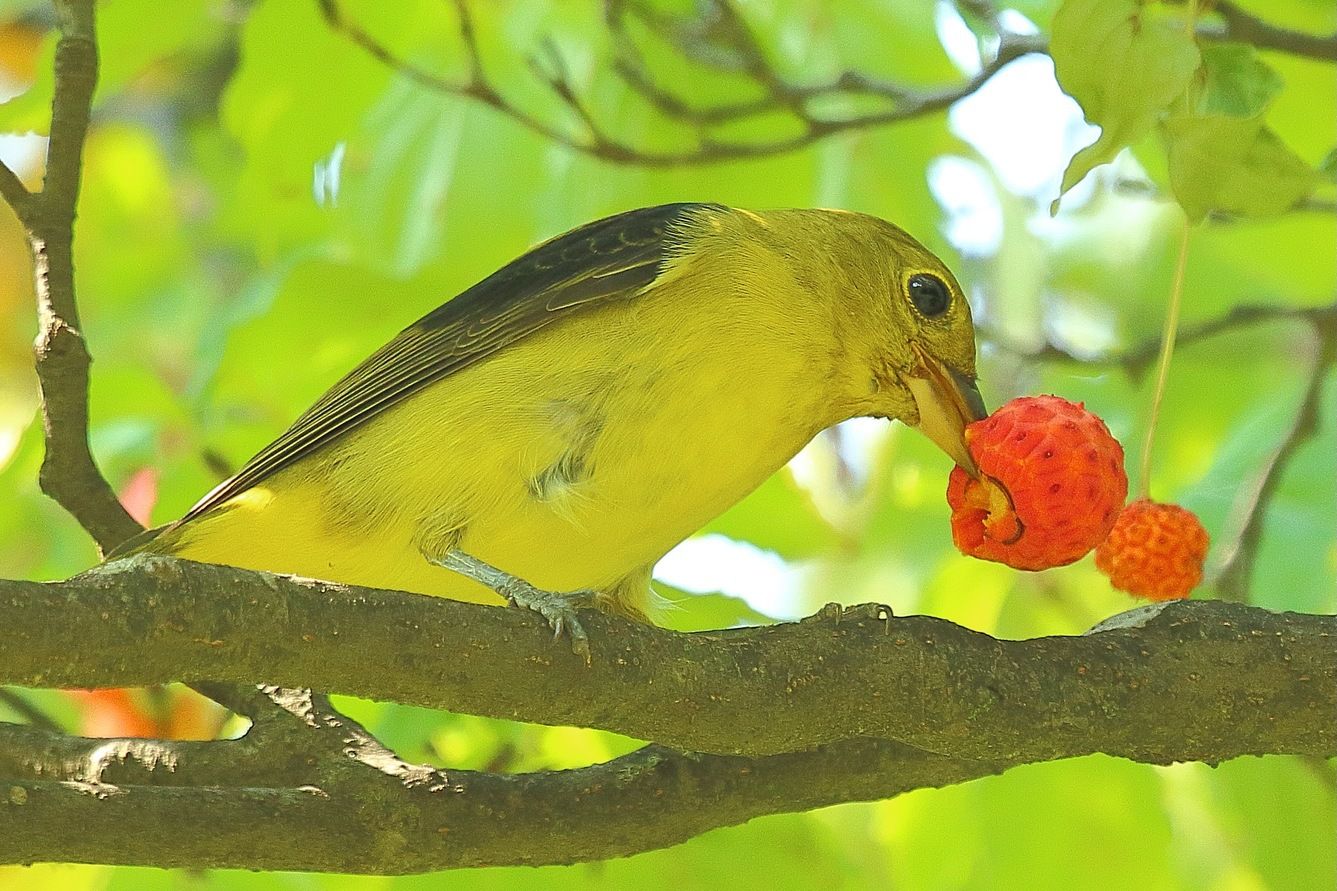Scarlet Tanager
A male Scarlet Tanager was photographed along Upland Trail at Salter Grove in May of 2016 and represents the only record of this species in the park from 2002 through 2024.
The male has black wings that are striking against a brilliantly red body. In contrast, the female and immature birds share a much duller plumage--yellow where the male is red, and olive green where the male is black. It is understandable that they would generally be inconspicuous because this robin-size bird prefers to stays high within tree crowns. Surprisingly however, even the colorful male can be easily overlooked when backlit against canopy foliage.
The Scarlet Tanager breeds in deciduous and deciduous-coniferous forests in the eastern third of North America, ranging from the southern Canadian provinces to the northern portion of the Gulf Coast states. It favors the interior of mature forests with tall trees for good reason. Researchers have found that a forested area of at least 25 acres is required to insure breeding success, so as to avoid brood parasites like the Brown-headed Cowbird which are common along edge habitats.
After breeding, the Scarlet Tanager journeys south to winter in forests on the hills and mountains of northern and western South America. Despite being a forest interior specialist during breeding, the Scarlet Tanager will feed in shrubby and more open habitats on migration. It normally feeds on a large variety of terrestrial invertebrates such as insects, spiders, snails, and even earthworms, but is seasonally frugivorous.
With only small patches of sparse woodland scattered over 12 acres, Salter Grove presents no more than a rest stop for this long-distance migrant. Historically, it was reported to be a common resident in all but the southeastern portion of Rhode Island, favoring inland over coastal forests.
Analyses of data collected for the First (1982-1987) and Second (2015-2019) Atlas of Breeding Atlas in Rhode Island indicate an increase in Scarlet Tanager sightings as well as some evidence of breeding. Consistent with historical patterns, the highest nesting densities occurred in western Rhode Island along the Connecticut border.
Sporadically, fall migrants are blown off course, crossing the Atlantic Ocean. During November 2024, hundreds of excited birdwatchers flocked to Yorkshire, England to see the first ever Scarlet Tanager on the British mainland. All previous sightings had been on remote islands.
For more information:
https://www.allaboutbirds.org/guide/Scarlet_Tanager
https://www.audubon.org/field-guide/bird/scarlet-tanager
https://forestry.com/animals/birds/scarlet-tanager/
https://en.wikipedia.org/wiki/Scarlet_tanager
https://www.bbc.com/news/articles/cg571eygj97o
Clarkson, C. E., Osenkowski, J. E., Steen, V. A., Duhaime, R. J., and Paton, W.C. (2023) The Second Atlas of Breeding Birds in Rhode Island. Rhode Island Department of Environmental Management Division of Fish and Wildlife. pp. 410-411.
Howe, Jr., R.H. and Sturtevant, E. (1899) The Birds of Rhode Island. p.75.

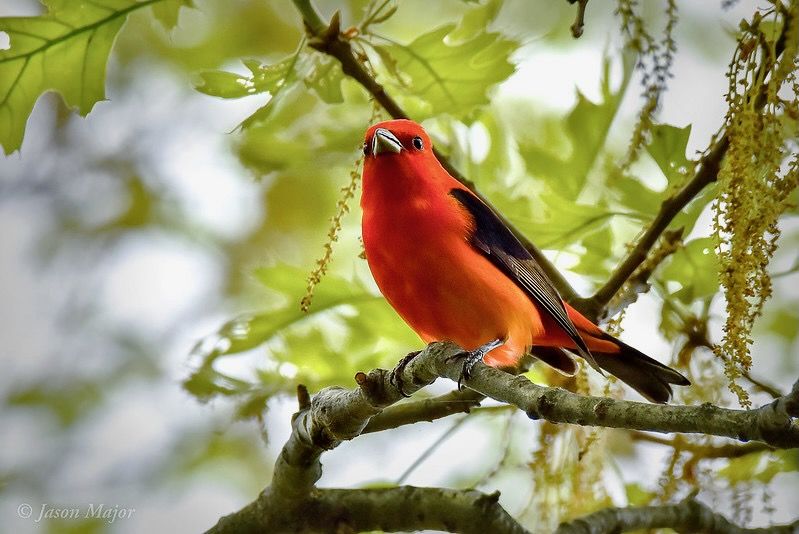
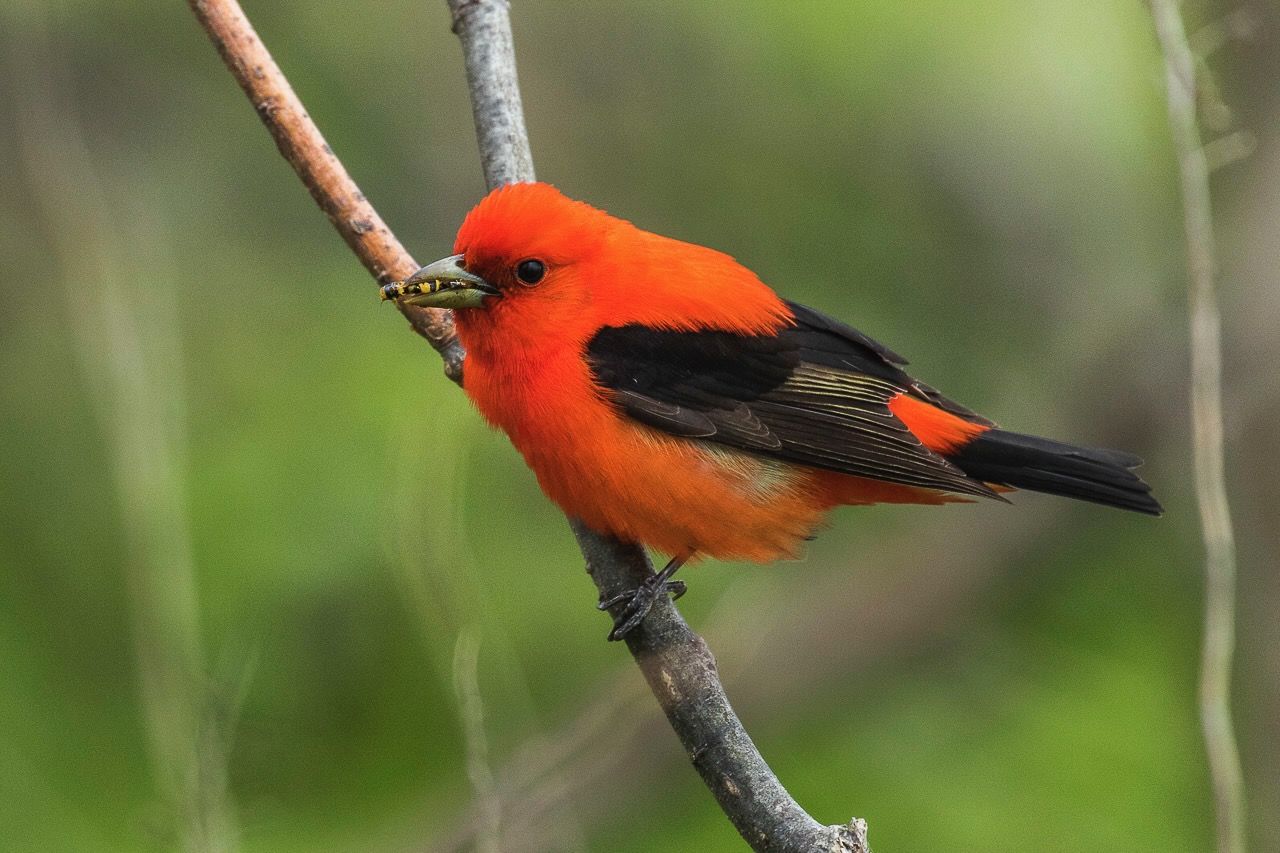
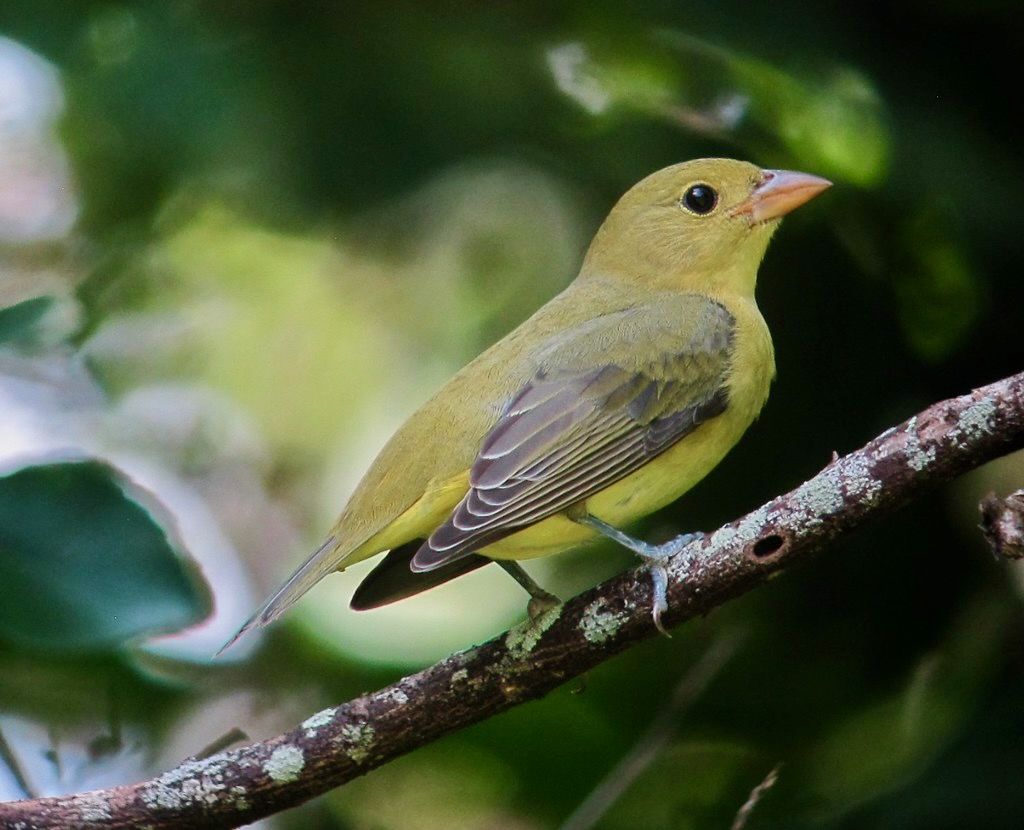

.jpeg?w=350?blur=10)
